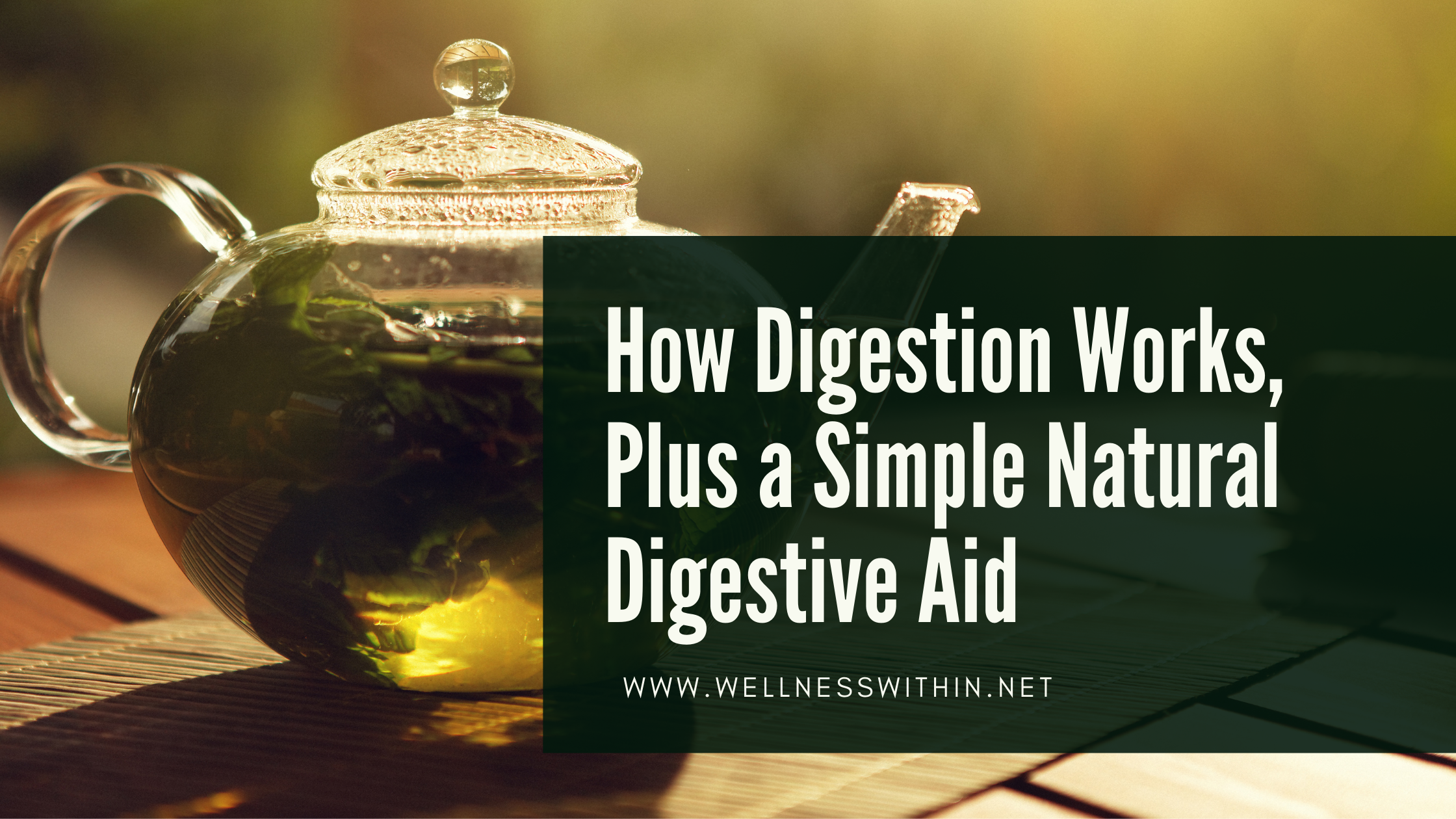How Digestion Works, Plus a Simple Natural Digestive Aid
INSIDE: Digestion is one of the most vital systems in the body. Let’s learn about how digestion works, as well as a natural digestive aid that is readily available to help you enjoy digestive health.
Digestion is not always an easy subject to talk about, but it’s one that needs to be discussed because it plays a role in how we feel, how healthy we are, and how well our immune system functions.
Let’s learn about how digestion works…
How Digestion Works?
The digestive tract is a huge muscular tube extending about thirty feet from the mouth to the anus. Lining the entire tract is soft mucous membrane that protects the tubing from foreign substances.
There are muscles that push the food down the esophagus to the stomach, down to the small intestine and then to the colon (known also as the large intestine). This movement is called peristalsis.
What Role Does the Mouth Play in Digestion?
Digestion begins in the mouth, as enzymes in saliva break down starches into simple glucose. That’s why it’s best not to drink liquids with dinner, so that the enzymes can do their job.
Chewing also breaks down the indigestible cellulose coating of fruits and vegetables, thereby liberating the nutrients. And chewing creates more surface area on the food so that the digestive enzymes can break it down further.
It then breaks down to something called chyme and moves through the opening at the lower end of the stomach (pyloric valve) and into the first section of small intestine (duodenum). Carbohydrates enter first, then proteins, and then fats.
Digestion and assimilation primarily occur in the first two sections of the small intestine. Then it moves thru the ileocecal valve and into the colon.
What Happened to Undigested Material?
Whatever undigested material is left leaves the small intestine and enters the large intestine as a very thick past. The remaining useable liquid is absorbed, after which the waste collects in the rectum at the end of the large intestine, finally leaving the body through an opening called the anus.
Whew! That’s a lot of work - it’s quite a process.
But that’s just the beginning, because there’s so much more to say about digestion.
How Digestion Works With the Central Nervous System
The digestive organs share an interesting relationship with the central nervous system: they both evolved independently from the same embryonic tissue.
Both the digestive tract and the spinal cord each contain over one million nerve cells. Actually, the digestive system contains more nerve cells (known as the enteric nervous system) than the peripheral nervous system.
Major brain neurotransmitters (including serotonin, dopamine, norepinephrine, nitric oxide, and glutamate) are also in the gut when food is present. So are natural opiates, benzodiazepines, and psychoactive chemicals similar to the drugs Valium and Xanax.
In addition, the brain and the gut are linked by the vagus nerve, the longest of all cranial nerves and a kind of “neural cable.” The vagus nerve travels from the brain stem, through the neck and chest organs to the abdomen.
Here, then is the physiological and biochemical validity to “gut feelings”; the abdominal cavity is literally a second brain!
Pain-Alleviating Chemicals in the Gut
Since the gut produces pain-alleviating chemicals similar to those found in drugs—for instance, in cases of severe pain the gut sends benzodiazepine directly to the brain—people who eat when anxious may be trying to reproduce the effects of the drugs.
It is not yet known whether the gut synthesizes benzodiazepine from compounds in foods, from bacterial action on the food, or both.
Incidentally, researchers believe that serotonin in the gut catalyzes peristalsis. That’s why Prozac and other drugs that divert serotonin from the intestinal tract to the brain cause digestive disturbances.
The Best Natural Digestive Aid
One natural method to help relax the digestive muscles and ease pain is by using Peppermint.
Yes, that’s right... this natural herb often grows wild, it can be easily purchased from a grocery store, or you can have a cup of tea or even capsules.
The oils in the plant help prevent the smooth muscles from contracting, thus relieving spasms in the gut and allowing blood to flow. It can also help with nausea and vomiting.
It’s a great thing to have a cup of peppermint tea after eating. So next time you go to reach for that antacid, try a cup of peppermint tea first!
Your body will thank you for it.




